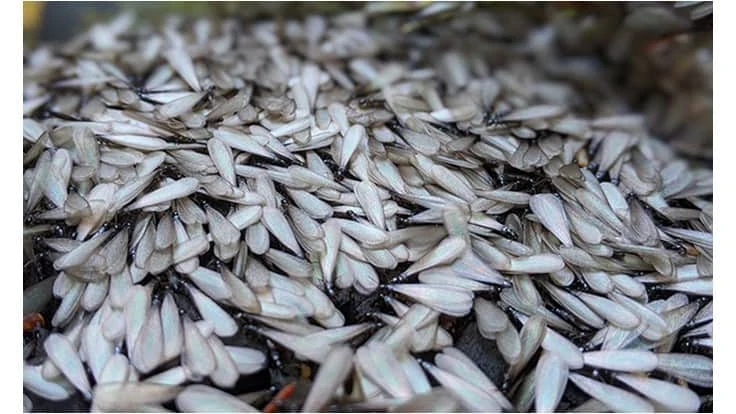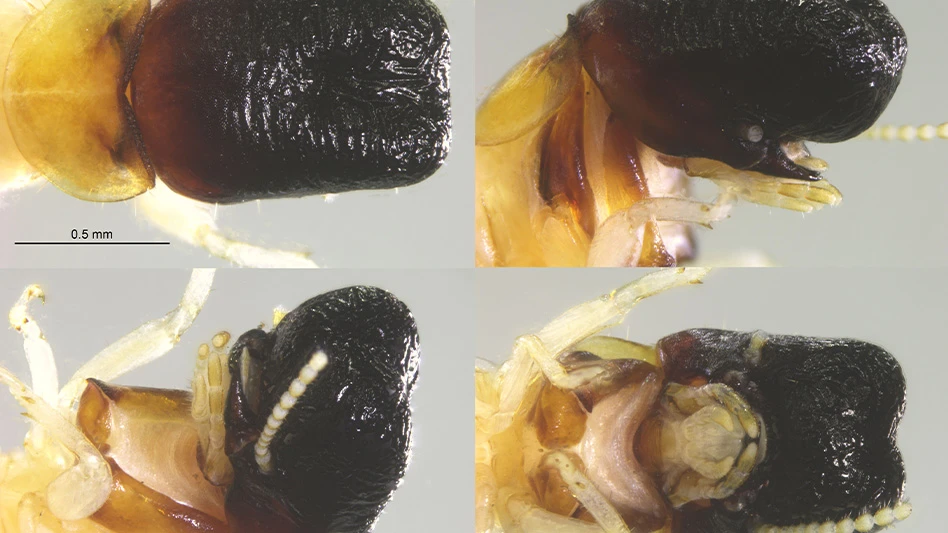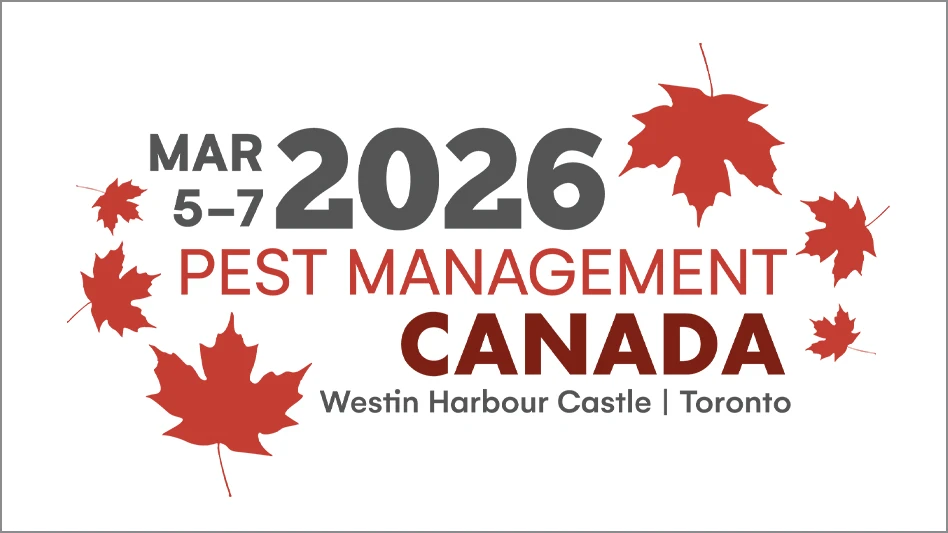
Casey Hubble
If you see western subterranean termites swarming in the spring, from now through June, save the specimens for University of California Urban Integrated Pest Management (IPM) advisor and urban entomologist Andrew Sutherland.
Sutherland, UC Riverside professor and urban entomologist Chow-Yang Lee, and USDA forest entomologist Lori Nelson want to compare the spring swarming populations of Reticulitermes hesperus with the fall swarming populations.
“A major taxonomic question surrounding western subterranean termites remains unsolved,” said Sutherland, the Urban IPM Advisor for the San Francisco Bay Area. “Most termite species simultaneously swarm over a relatively short period during one season, facilitating genetic exchange during mating. Individuals thought to represent Reticulitermes hesperus, however, have been observed swarming during both autumn (usually on a sunny day after the first autumn rain event) and spring (sunny days when soil is moist) suggesting that there are at least two cryptic species considered within the western subterranean termite complex or that speciation is underway (individuals swarming at different times of the year cannot mate with one another).”
In fact, says Sutherland, USDA Forest Service research by Michael Haverty and Lori Nelson indicates that spring and autumn swarming populations can actually be distinguished by different cuticular hydrocarbons (waxes on exoskeleton).
In the collaborative UC IPM, UC Riverside, and USDA Forest Service research project, “we seek to resolve this question once and for all by comparing DNA microsatellite data and cuticular hydrocarbon data from alates (winged termite swarmers) collected during these different seasons,” Sutherland said.
Residents of California, Oregon, Washington, Idaho, western Nevada, southern British Columbia, and northern Baja California can help by collecting at least 25 individuals of swarming Reticulitermes and freezing them in a hard-walled container, such as a pill bottle, film canister or a food storage plastic container.
Contributors will receive a Common Cockroaches of California poster or another special gift. Contributing pest management professionals will receive a free training opportunity with ‘IPM' continuing education units for California's Structural Pest Control Board licenses.
Sutherland's program will fund the shipping of the specimens. He may be reached at amsutherland@ucanr.edu for further information, such as if the termite specimens qualify.
Source: UCR News Service
Latest from Pest Control Technology
- Donny Oswalt Shares What Makes Termites a 'Tricky' Pest
- Study Finds Fecal Tests Can Reveal Active Termite Infestations
- Peachtree Pest Control Partners with Local Nonprofits to Fight Food Insecurity
- Allergy Technologies, PHA Expand ATAHC Complete Program to Protect 8,500 Homes
- Housecall Pro Hosts '25 Winter Summit Featuring Mike Rowe
- Advanced Education
- Spotted Lanternflies, BMSBs Most Problematic Invasive Pests, Poll Finds
- Ecolab Acquires Guardian Pest Solutions





